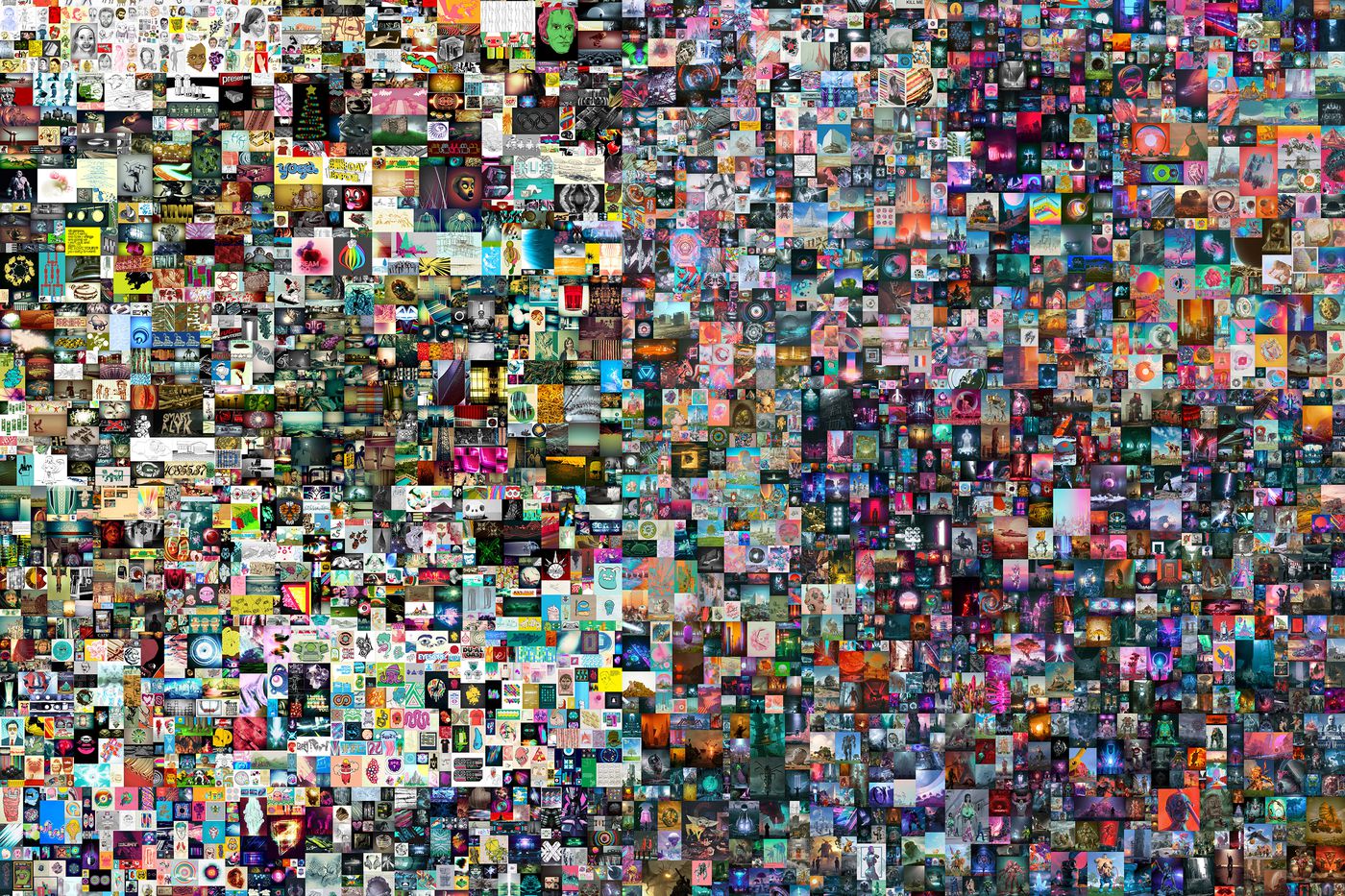I originally wrote this article for the April 25th 2021 issue of Campaign Middle East magazine
Unless you’ve been living under a rock for the last few weeks you’ve probably heard people talking about NFTs, or non-fungible tokens – digital files such as images, videos, audio or text files that have recently been changing hands for millions of dollars.
If you have no idea what ‘fungible’ means, you’re not alone.
Essentially, an NFT is a one-of-a-kind digital file that uses blockchain technology to register a unique version of itself – generally considered an ‘original’ or definitive version of any file that, in theory, can be copied an infinite amount of times.
With me so far?
It’s basically a way of manufacturing scarcity using a digital stamp of authenticity. And where there’s scarcity and exclusivity, there’s usually a cohort of people lining up to hand over their cash.
Over the last few weeks a piece of digital art, Beeple’s ‘Everydays: The First 5000 Days’ (pictured above), was sold for $69 million at Christie’s, a cat GIF sold for $560,000, and, in a somewhat meta twist, a New York Times article about NFTs was itself turned into an NFT and auctioned for $560,000 with the proceeds going to charity. In many ways, the buyers of these NFTs are just buying bragging rights, but they also believe that it’s an asset they may be able to resell later.
It might sound like pure alchemy but in tech circles it’s seen as a way to address a problem that has emerged over the last 20 or so years of how to register value for once-tangible assets like art, books, music etc. that now primarily exist in a digital form. NFTs give creators a way of engineering value for a digital asset and making digital collectibles possible. Some creators are already starting to take advantage of the buzz.
Tennessee rock band Kings of Leon was the first band to release an album as an NFT this March with their latest album, ‘When You See Yourself’. The band released three types of NFT of the album, all including exclusive digital artwork, one of which offered a limited-edition vinyl and another that included live show perks like front-row seats for life. A company called YellowHeart developed the smart contracts and intelligence within the tokens and claim to want to “use blockchain technology to bring value back to music and better direct-to-fan relationships”.
Outside music, there has been an explosion in sales of digital-only products recently especially in gaming, from exclusive outfits in Fortnite to various in-game items in Minecraft, Roblox, or any number of other games. Fortnite is a free-to-play game yet generated $1.8 billion in revenue in 2019, most of which came from selling in-game items.
It’s not difficult to see how NFTs might be used to enhance the value of such digital goods – letting platforms effectively create limited editions of items that can be resold and traded, not unlike how an artist might release a limited run of prints of an original artwork.
Brands that sell tangible goods face a steeper challenge in taking advantage of these digital trends, but even some of these guys are getting in on the action too. In March, luxury brand Gucci launched a ‘virtual sneaker’ that can only be worn in digital environments. The neon-coloured digital shoes can be purchased on Gucci’s mobile app from $9 and users can try them on using augmented reality and “wear” them in photographs on social media. Similarly, Nike has patented NFT versions of shoes called CryptoKicks, which allows users to create custom sneakers that may then be manufactured in the real world. In this way NFTs can blur the line between physical and virtual goods, while capitalizing on monetization opportunities in both.
There are a bunch of other ways that brands can get creative like this when it comes to taking advantage of NFTs, from exclusive and limited edition digital content around new products or a physical experience like a concert or sporting event, to even crowdfunding new ideas and products with early customers being able to sell their initial purchase if the concept takes off. While the hype and hyperbole behind emerging concepts like NFTs can make it hard to distinguish the opportunity from the noise, behind most novel ideas is often the possibility of something useful. For NFTs we’ll just have to wait and see whether the emperor has any clothes, digital or not.


